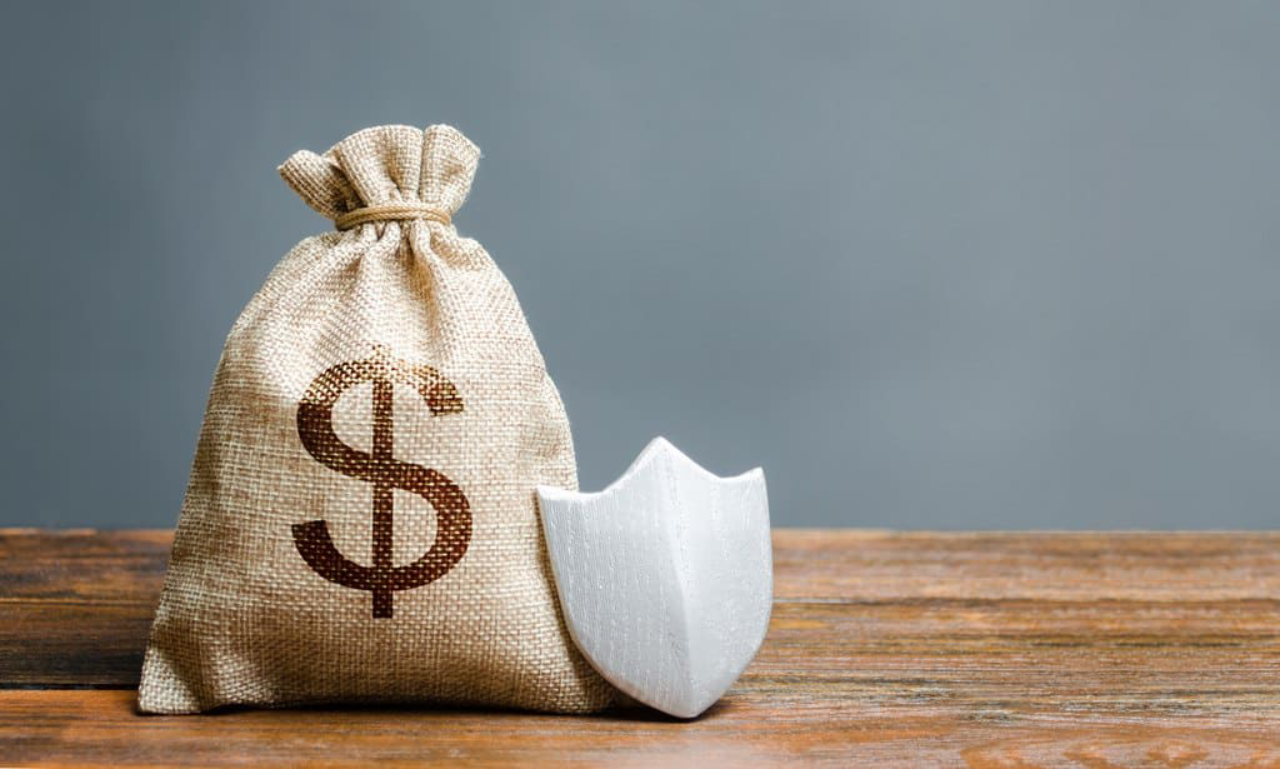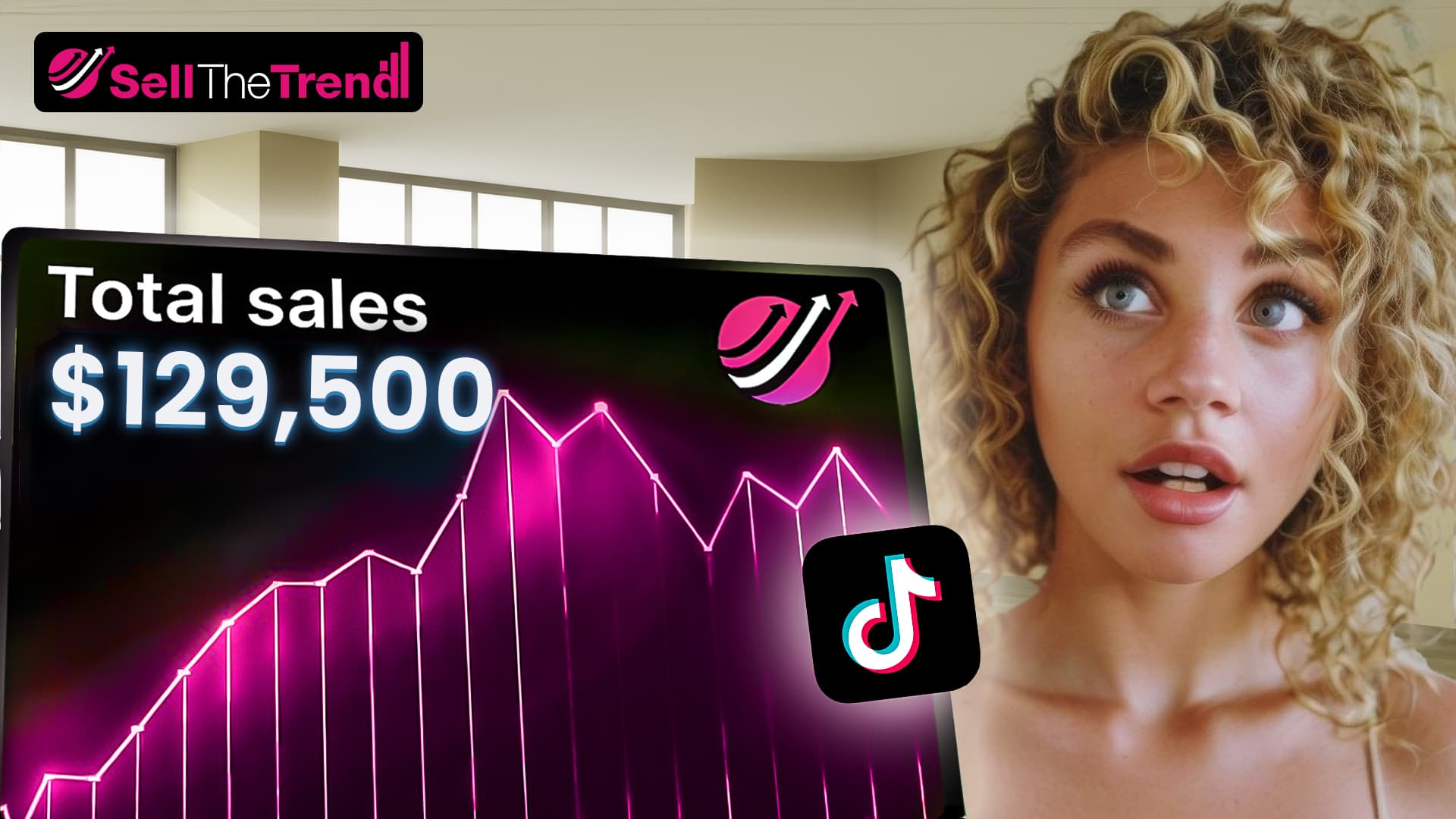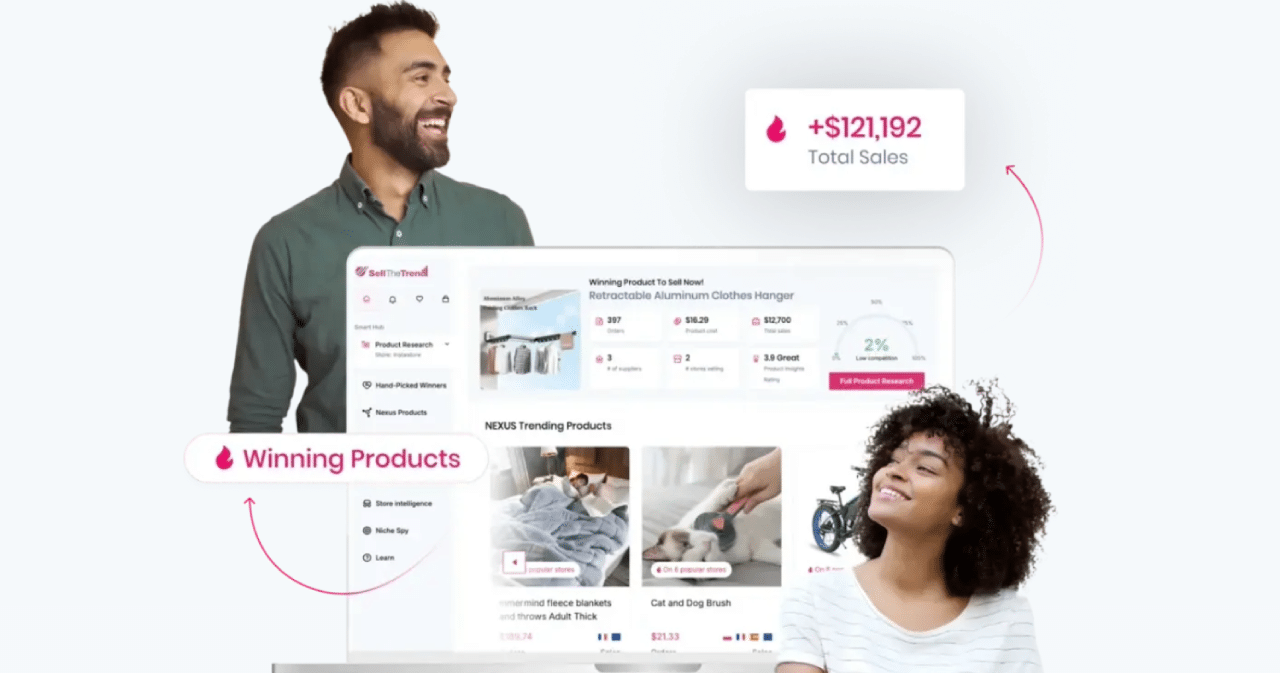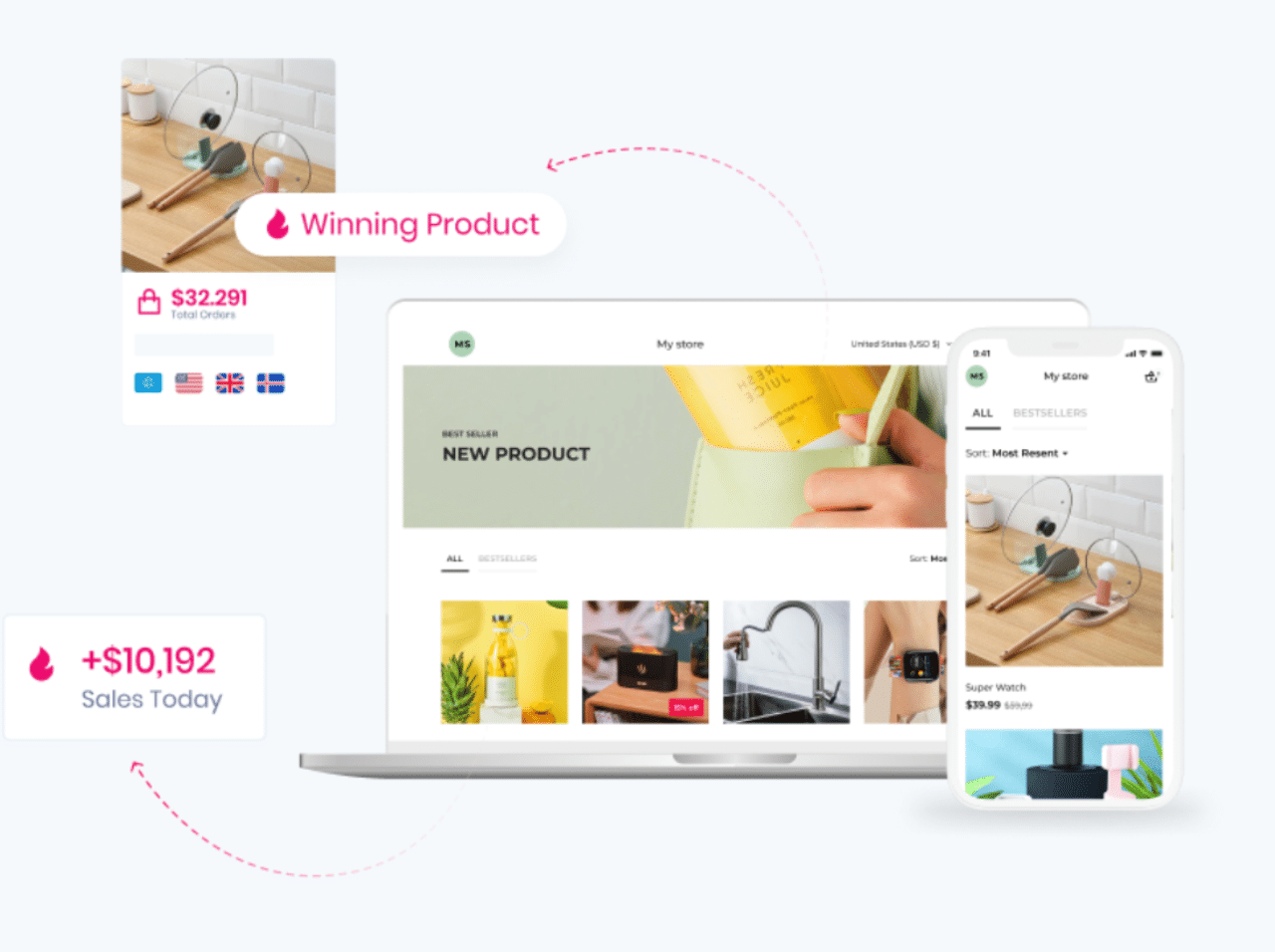Dropshipping Scams & How to Avoid Them as a Beginner
Contents
Dropshipping is one of the easiest ways to start an online business. You don’t need to hold inventory, and the startup costs are low.
But with that low barrier comes a big risk: dropshipping scams.
From fake suppliers to overpriced “guru” courses, there are plenty of people looking to take advantage of beginners.
If you’re starting, it’s important to know what to look for. This guide will walk you through the most common scams—and how to avoid them.
Key Takeaways
- Avoid fake suppliers and always order samples before selling.
- Use trusted tools like Sell The Trend to find trending products and verified suppliers.
- Don’t trust anything that sounds too easy or promises money with minimal effort.
- Check reviews, test support, and use secure payment options to stay safe.
What Are Dropshipping Scams?
Dropshipping scams are fake or shady offers that target people trying to start an online store. These scams look real, but they’re designed to take your money, your time, or your trust.
They often promise fast results, easy profits, or “done-for-you” stores. But behind the scenes, there’s little to no value — and sometimes no product at all.
Scammers know that beginners are eager to make money and may not know what to look out for. That’s why they use flashy ads, fake reviews, and high-pressure sales tactics to trick you into buying something that doesn’t work.
Some common examples include:
- Fake suppliers who take your money and never ship
- “Gurus” selling overpriced courses with no real help
- Useless apps or tools that don’t do what they claim
- Pre-built stores that are copy-pasted and never make sales
These scams can drain your budget, ruin your store, and make you want to quit before you even begin.
Use Trusted Tools like Sell The Trend to Stay Safe Early On
One of the easiest ways to avoid dropshipping scams is to start with the right tools.
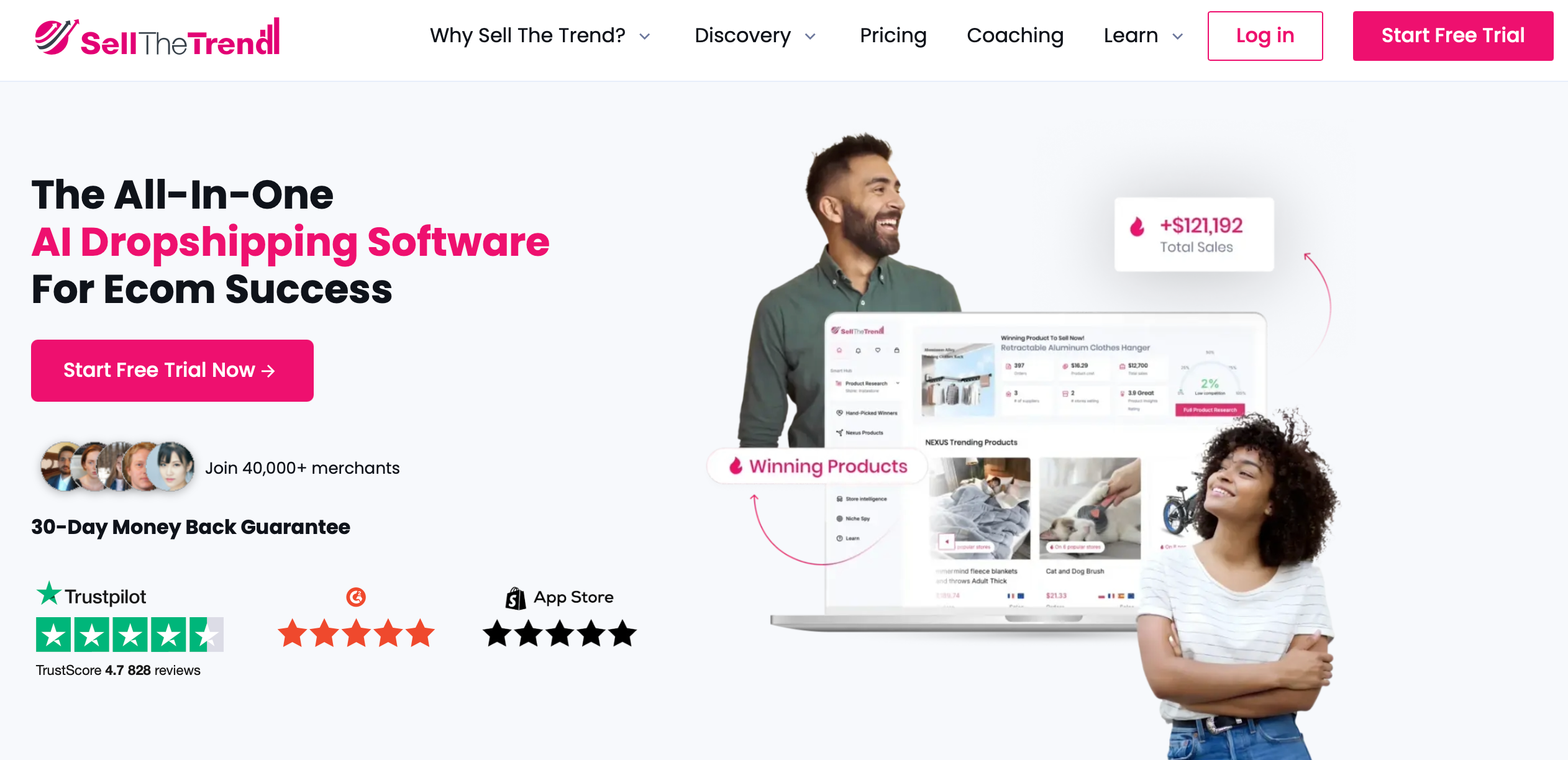
As a beginner, it’s hard to tell which suppliers are real, which products are trending, and what works. That’s where trusted platforms come in.
Sell The Trend is a great example. It’s an all-in-one dropshipping tool that helps you:
- Find winning products based on real data
- Connect with verified, reliable suppliers
- Import products to your store with one click
- Track trends across AliExpress, Amazon, and TikTok
Instead of guessing or relying on random advice, tools like Sell The Trend give you facts. You can see what’s selling, what’s risky, and what to avoid.
This saves you time, protects your money, and helps you avoid shady shortcuts.
If you’re serious about dropshipping, using a trusted tool from day one can make a big difference.
Common Dropshipping Scams to Watch Out For
If you’re new to dropshipping, it can be hard to spot what’s real and what’s a scam. Many offers seem legit, but are designed to take your money without giving you real value.
Here are some of the most common scams beginners fall for:
a. Fake Suppliers
Fake suppliers pretend to sell wholesale products, but they aren’t real businesses. They may run poorly designed websites with fake product images, or they might list items that don’t even exist.
Once you pay them—either through upfront “membership” fees or bulk product orders—they disappear, or send low-quality goods that destroy your store’s reputation. In some cases, they claim to be based in one country but operate from somewhere completely different, making it nearly impossible to hold them accountable.
b. Overpriced Guru Courses
These scams usually come from self-proclaimed “ecom millionaires” who flood social media with screenshots, rented cars, and big promises. They offer expensive courses—sometimes thousands of dollars—claiming you’ll build a 6-figure store in weeks.
But once you join, you realize the content is basic, outdated, or copied from free YouTube videos. Many of these gurus make their real money by selling the course—not dropshipping.
c. Pre-Built or Done-for-You Stores
This scam plays on your desire for convenience. You’ll see ads or DMs offering a complete dropshipping store, fully designed and “ready to make money.” They promise product listings, automation, and maybe even ads.
The truth? Most of these stores are built from the same template and filled with generic or oversaturated products. There’s no real branding, no traffic strategy, and often, no support once you’ve paid. Some sellers even reuse the same store for multiple buyers, so you end up competing with dozens of identical sites.
d. Scammy Software and Apps
The dropshipping world is full of tools that claim to help you find products, boost conversions, or automate your store. Some of them are legit. But many are low-quality apps with flashy marketing and zero real results.
These tools often charge high monthly fees, hide extra costs, or don’t function as promised. Some may even steal your product data or hurt your store performance. Worse, once you subscribe, you’ll find that customer support is slow—or doesn’t exist at all.
e. Fake Coaching or Mentorship Programs
Another common trap is the high-ticket coaching offer. These are one-on-one or group mentorship programs that promise to “take your store from zero to $10k/month.”
They often come with slick websites, webinars, and high-pressure sales calls. But once you’re inside, the coaching is generic, and the mentor is either too busy or completely unavailable. In many cases, you’re passed off to underqualified assistants, and your questions go unanswered.
Some don’t even deliver the sessions at all, and getting a refund becomes a nightmare.
How to Avoid Dropshipping Scams as a Beginner
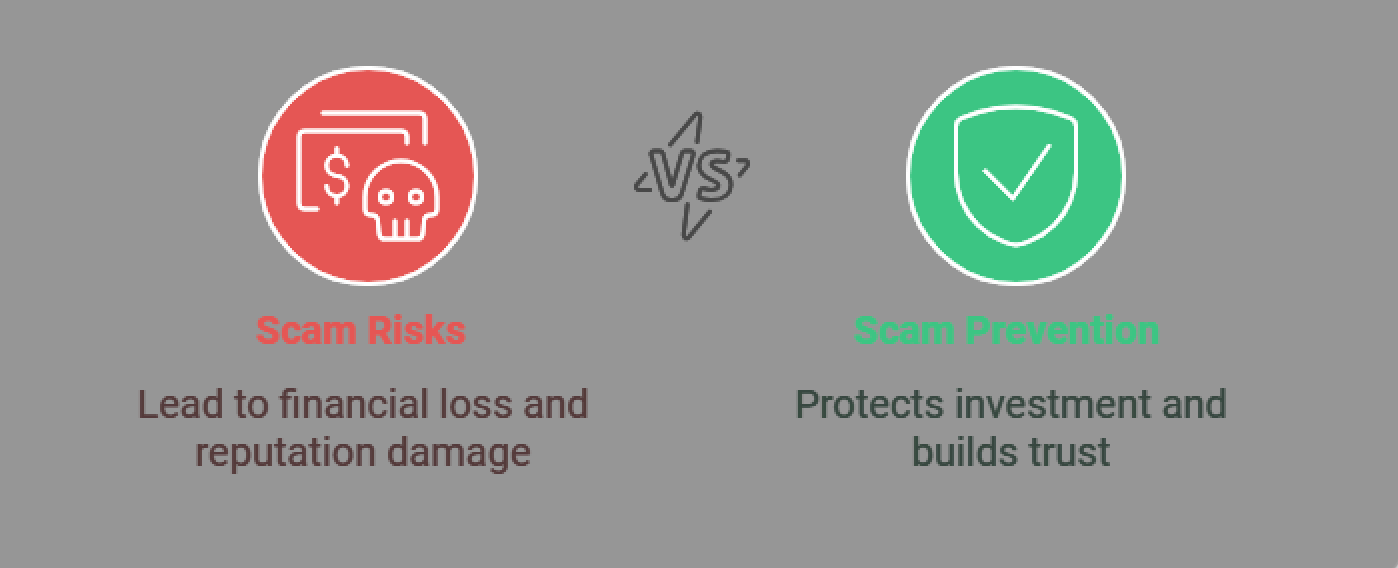
1. Don’t Rush Into Anything
Scammers depend on quick decisions. That’s why so many fake offers use pressure tactics — they want you to pay before you’ve had time to think clearly.
Here’s how it usually plays out: you see a course, a “done-for-you” store, or a product research tool that promises fast results. You’re told there are limited spots, or the price is going up in 24 hours. It feels urgent — and you don’t want to miss out.
Instead of giving in, do this:
- Pause and take 24 hours before buying anything.
- Search the product, tool, or person’s name + “review” or “scam” on Google.
- Check for real testimonials in Reddit threads, Facebook groups, and YouTube comments.
- If a supplier is involved, look up their domain age on Who.is or check their rating on Trustpilot.
- Message their support with a question and see if they respond. Scammers often don’t.
Real platforms don’t rush you. For example, Sell The Trend offers a free trial and step-by-step walkthroughs. You’re encouraged to test things before committing — that’s how legit tools behave.
If someone refuses to answer your questions or pushes you to “act now,” that’s your sign to walk away.
2. Stick to Verified Tools and Platforms
When you’re new to dropshipping, it’s tempting to grab whatever tool or supplier you find first on Google or TikTok. But that’s exactly how beginners get scammed — by trusting random websites, fake product finders, or shady suppliers with no track record.
The safest move is to use tools and platforms that are already trusted in the dropshipping space, especially those that are beginner-friendly and transparent about what they offer.
Instead of trying to figure everything out manually, rely on trusted platforms like Sell The Trend, which are built to help new sellers make smart decisions.
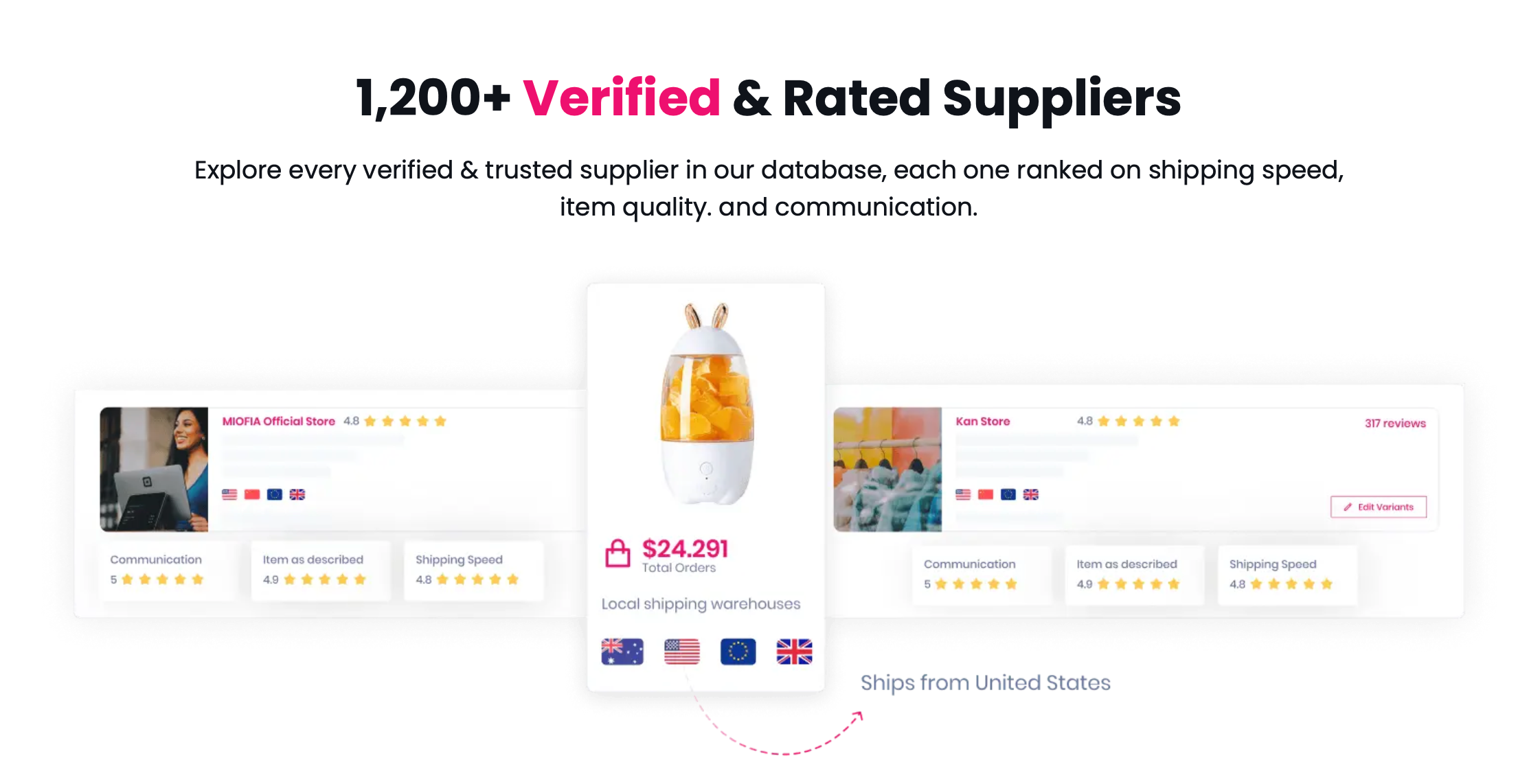
It gives you access to verified suppliers, real product data, and automation tools — all in one place. Most importantly, it removes the guesswork that leads people into scam traps.
Before using any tool or platform, take these basic steps:
- Look for real user reviews on third-party sites like Trustpilot or G2.
- Check if they offer a free trial or demo — avoid tools that demand full payment upfront.
- See how long they’ve been in business — avoid brand-new domains with no history.
- Test their support — send a simple question and evaluate their response.
- Explore beginner help centers or tutorial videos. Real platforms invest in educating users.
A good platform will show you what’s working, offer supplier transparency, and give you full control over your store — not lock you into a system you don’t understand.
Sell The Trend, for example, lets you validate products with real-time data across TikTok, Amazon, and AliExpress. It also gives you supplier ratings, order fulfillment tools, and a visual product research dashboard — making it easy to avoid scams without needing expert knowledge.
Bottom line: if a tool hides its features, has no reviews, or feels like a black box — skip it. Use platforms with a strong reputation and beginner support built in. It’s the difference between building something real and getting burned on day one.
3. Research Before You Pay
Scams often look professional. The websites are polished. The testimonials sound real. The promises are huge. That’s why you can’t trust how something looks — you need to dig deeper before you pay for anything.
This includes:
- Supplier membership fees
- Paid product research tools
- One-on-one mentorship offers
- Automation software
- Done-for-you stores
- Ads claiming “zero work” success
Scammers count on you skipping the research. They know most beginners are too eager or don’t know what to look for. But here’s the truth: if a tool, course, or service is legit, it will stand up to scrutiny.
Before spending even $1, do this basic research checklist:
- Search the name + “review” or “scam” on Google and Reddit
- Look for YouTube reviews — not just ads, but walkthroughs and tutorials
- Use Trustpilot, SiteJabber, or G2 to check user reviews
- Check how long their website has existed at who.is — new domains = red flag
- Go to Facebook groups like Dropshipping Titans or Shopify Dropshipping, and ask if others have used it
For example, when you look up Sell The Trend, you’ll find it’s been around for years, has a large active user base, and provides tutorials, case studies, and free trials — all signs of a real, functioning platform. That’s how you know it’s a tool, not a trap.
If something has zero reviews, no transparent pricing, or seems “too secret to explain” — step away. Scams don’t like to be questioned. Real tools welcome it.
Think of your research as a small investment of time that saves you hundreds (or thousands) later. Every serious business owner does it. If you want dropshipping to work, this step isn’t optional — it’s necessary.
4. Avoid High Upfront Payments
One of the easiest ways to lose money in dropshipping is by paying a large amount upfront — before you’ve made a single sale. Scammers know this. That’s why they push expensive “starter packages,” “automation services,” or mentorship deals that sound like a shortcut to success.
You might see offers like:
- “Build your store for $1,000 — we’ll handle everything”
- “Lifetime product research access for $499”
- “Private coaching — just $2,000 upfront”
- “Preloaded store with 50 winning products for $800”
These offers feel tempting. You’re thinking, If I pay now, maybe I’ll start earning faster. But in reality, most of these setups are generic, low-effort, and not built for you. And once you’ve paid, the seller often disappears or delivers something you can’t use.
You don’t need to spend big to get started. Smart beginners start lean. You can test the market, learn the tools, and validate product ideas without dropping hundreds upfront.
Here’s how to keep costs safe and low:
- Use tools that offer free trials (like Sell The Trend) before you commit
- Avoid any “all-in” packages that don’t show proof of what you’ll get
- Start with a small budget — under $100 for testing is more than enough
- Don’t pay for bulk products or supplier access until you’ve sold something
- Treat every payment like an investment — ask what return it gives you
Legit tools will give you time to explore, test, and decide. For example, Sell The Trend doesn’t lock you into a high-ticket plan. You can try their features first — like product research, supplier filters, and store automation — without spending a fortune.
If someone’s pressuring you to pay big up front, that’s not a business opportunity — it’s a red flag. Build slow, spend smart, and stay in control.
5. Check for Real Support
Scam websites are often quiet once they’ve taken your money. There’s no help, no response, and no one to contact when things go wrong. That’s why one of the easiest ways to tell if a tool or service is trustworthy is by checking its customer support before you buy.
Good support doesn’t just answer questions. It shows the company cares about helping real users succeed. That’s especially important when you’re new to dropshipping and will likely need help with setup, strategy, or technical issues.
Before buying anything, test their support directly. Don’t just take their word for it — try it yourself.
Here’s exactly what to do:
- Send a message through their contact form or live chat, and time the response
- Ask a beginner a question (e.g., “How do I import products?”) and see if they explain clearly
- Check if their website has a Help Center or FAQ section with updated info
- Search YouTube for tutorials made by the company — not just influencers
- See if they offer community access like a private group, forum, or onboarding session
For example, Sell The Trend offers live chat support, a full Help Center with video walkthroughs, and step-by-step guides for beginners. You don’t have to guess — they walk you through everything, from finding suppliers to automating your store.
That kind of support is what separates real platforms from shady operations. If you send a message and hear nothing back… that’s already your answer.
Dropshipping Scams: FAQs
1. Is Dropshipping Considered Scamming?
No, dropshipping is not a scam by itself. It’s a real business model used by many dropshippers around the world.
But some people use it in the wrong way. They sell low-quality products at significantly higher prices, lie about product quality, or don’t fulfill orders at all. These are fraudulent sellers, not real business owners.
If someone is running a get-rich-quick scheme and promising huge profits with minimal effort, that’s a red flag.
To avoid scams, only buy from reputable sellers and compare prices before you purchase anything.
2. Is There Any Risk In Dropshipping?
Yes, like any business, dropshipping comes with risks.
You could fall for counterfeit products or unreliable wholesaler listings. Some social media platforms promote fake stores or unrealistic expectations.
There’s also the risk of negative reviews if your product quality is poor or shipping is slow.
To lower risk:
- Always order samples first
- Use secure payment options like PayPal
- Stick with trusted payment gateways and payment processors
- Research sellers through the Better Business Bureau or the Federal Trade Commission
3. Has Anyone Got Rich From Dropshipping?
Yes, some people have made huge profits from selling products through dropshipping.
But it doesn’t happen overnight. The people who succeed treat it like a real business model, not a get-rich-quick scheme. They manage customer service, test trending products, and invest in learning.
It takes time, money, and effort. Success in dropshipping comes from consistency, not shortcuts.
4. What Are The Red Flags For Dropshipping?
Here are some signs you might be dealing with a scam or a bad seller:
- Prices are significantly higher than the market
- The store has no real contact info or customer support
- You see too many negative reviews
- Promises of fast, easy money with minimal effort
- No way to compare prices or check product samples
- They use shady payment gateways instead of trusted ones like PayPal
- No listing in the Better Business Bureau or a history of complaints with the Federal Trade Commission
- Ads only on social media platforms with no real website
When something feels too good to be true, it probably is.
5. What Is The Biggest Problem In Dropshipping?
The biggest issue is product quality and delivery.
Many sellers don’t check their product samples before selling products, which leads to low-quality products, bad customer experiences, and negative reviews.
Another problem is fulfilling orders on time. If your supplier is slow or unreliable, your business suffers.
You also have to deal with counterfeit products, return issues, and rising ad costs.
Always work with reputable sellers, test everything, and choose reliable payment processors to protect your store.
6. What Is Illegal In Dropshipping?
Dropshipping is legal — but some practices are not.
It’s illegal to sell counterfeit products, use stolen content, or lie about your product quality.
Using fake reviews, hiding return policies, or running a get-rich-quick scheme can get you flagged by the Federal Trade Commission or banned by payment processors like PayPal.
Also, charging significantly higher prices without disclosure or failing to fulfill orders could lead to customer complaints. In some cases, customers may file reports with the Internet Crime Complaint Center or the business bureau.
To stay safe, always follow honest practices and verify your wholesaler before listing the same item in your store.
Conclusion
Starting a dropshipping business can be a smart way to earn online. But if you’re not careful, it’s easy to fall victim to fake tools, shady sellers, or bad advice.
Don’t trust everything you see online. Low prices might look good, but they often come with poor quality or slow shipping.
Take your time, do your research, and use trusted tools. That’s how you stay safe and build a real business that lasts.
